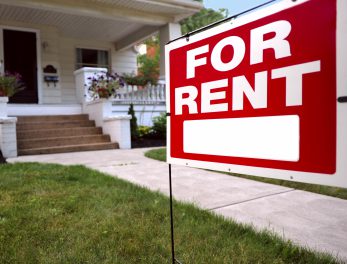What do you think the forthcoming QRM down payment requirements should be?
- 20%. (35%, 95 Votes)
- 10%. (35%, 95 Votes)
- 5%. (31%, 84 Votes)
Total Voters: 274
The Consumer Financial Protection Bureau (CFPB) announced new qualified mortgage rules that:
- prohibit loans approved with no or minimal buyer documentation (no/low doc loans);
- prohibit deceptively low teaser rates; and
- submit loans to rigorous underwriting standards.
These rules will take effect in January 2014.
first tuesday insight
The qualified mortgage was envisioned to protect the market from bubbling out of control again due to Wall Street financing. But it is the qualified residential mortgage (QRM) that will ultimately ensure consistent market stability for years to come.
Although their names sound similar, the differences are significant.
The new qualified mortgage rules focus on underwriting standards. Prior to the housing crash, it was assumed that lenders would regulate themselves. Surely, regulators reasoned, a self-interested lender would not offer a loan to a woefully unqualified applicant. But you know what they say about assumptions.
This was the standard before the secondary mortgage market became the world’s mortgage dump heap — a place for Wall Street to easily unload the toxic waste it was creating. In the era of originate-to-distribute, the quality of an applicant was always trumped by quantity. We were endearing homeownership, you understand.
These new underwriting standards seem like common sense, but it has become necessary in the wake of the Millennium Boom to spell these things out.
On the other hand, the rules that will govern the QRM (which have yet to be released) will outline controversial down payment requirements for loans receiving the best interest rates. Down payment requirements of 10% and 20% have been suggested.
Historically, a 20% down payment is always best. It demands buyers have sufficient skin in the game. Homebuyers with a significant down payment invested in their home are less likely to default since:
- the more they have invested, the more they have to lose, a consideration imposed when buying a home; and
- they are more likely to retain a positive equity in a typical business recession.
The over-abundant availability of low- and no-down payment loans was mostly to blame for the size of the most recent boom and bust, the financial accelerator at work. Homebuyers were simply handed a mortgage, no questions asked. When they were unable to continue making payments or home prices returned to the mean, they defaulted en masse. After all, they had no down payment invested to lose and no obligation to pay — so why not?
On the other hand, a 20% QRM standard means first-time homebuyers who do not choose Federal Housing Administration (FHA)-insured financing will have to save longer for their down payment. This should rightly concern agents, as it forces many potential homebuyers to either delay purchasing or take out an expensive non-QRM. Eventually, however, the demand for housing will stabilize as everyone’s expectations adjust to saving for that home they will purchase.
first tuesday is in favor of a phased-in QRM. Rather than overwhelming the recovering real estate market with full-blown standards right away, a gradual introduction of the QRM starts by requiring a 5% down payment. As employment levels increase, the minimum down payment standard is increased.
Eventually, the down payment will reach the ideal 20% in seven to ten years when the economy’s potential has fully recovered from this financial crisis. This achieves the long-term goal of greater housing market stability during future recessions. In the process, the short-term lack of qualified buyers is avoided.
Related:
What do you think the new QRM standards should be? Share your thoughts in the comments below!
Re: New Mortgage Rules Left Out Down Payments from The New York Times















the QRM, my opion, boy this is our goverment trying to show us that there doing something to poctect us against fraud,problem with this its legalize corruption, because wall street will always have there hands on the cookie jars because there part of congress, friends, who have financial ties , and interest in the game, we are bring down other countrys with our financial mess, but you dont here to much about that there retirements are not there anymore,401 k, its all speculation, mess, if you have a mortgage in todays world I hope it less then 5 yrs ,because you may not have a job, next month ,with job cuts employees trying to show a profit, for there c\CEO.
Concord Mike and Serge obviously understand the causes of the mortgage meltdown much better than Carrie Reyes does. Her opinion is that we should have a few more years of the same priorities that got us into this problem: trying to make sure that everyone has the right to buy their own home even if they can’t really afford it or are deadbeats. Yes, there were, and would be, lots of folks from agents to Bankers to sellers who profit from that approach. But then the bottom would just go on dropping out of the market all over again when thousands of “sub-prime” buyers walk away from their loan promises. Owning a home is not a right; it’s something you earn.
I totally agree with Concord Mike – it’s funny how government created this mess and is now blaming the banks, and arguing that we need more regulation to keep another bubble from happening. If there was no regulation in the first place, banks would not have been forced to do what they did.
My concern is that this article appears to voice that opinion as well. It mentions that banks were expected to make wise decisions in their best interest but failed and so that’s why we need regulation. The truth is that the government was the one who spearheaded the sub-prime loan program and banks were the ones who had to implement it.
The above comments act like purchasing a home is a right. I believe it is a priviledge.The only way to get back to a sound real estate economy is for everyone to take its lumps. Loss of sales for another few years would be worth it if the real estate market turned around.
I am all for full documentation and verification that the person can payback the loan. No exceptions should be made to people that are struggling or are underpaid based upon their past work history. If you sell one more home to someone who cannot make the payments, it will only decrease the value of all the homes in the area where owners are making their payments. Why should everyone continue to pay for someone taking such a risk. Therefore, the quickest way to firm up prices is to make sure anyone going forward who buys a home is qualified to make the payments. We should no longer act like we are at Las Vegas gambling on prices going up and refinancing to make our payments.
What happened to the Banks having to buy back their loans in the secondary market if they went bad. A strong real estate market will give everyone the opportunity to make a good income.
Just an opinion.
Beatrice Flannagan, The Community Reinvestment Act, signed by Jimmy Carter in 1977 and expanded in scope through the actions of Bill Clinton in the 1990′s is most responsible for the real estate bubble. The banks were just playing by the rules imposed upon them by the clowns in Congress – Frank and Dodd.
Read this article for the full scoop:
http://www.businessinsider.com/the-cra-debate-a-users-guide-2009-6
The CRA was expanded and used as a whip by the left-wing do gooders (Jesse Jackson, ACORN etc.) to bully banks and quasi-government institutions like Fannie and Freddie to start dealing out ZERO down payment loans to unqualified borrowers. Barney Frank and Chris Dodd kept the party going with their mis-management, lies, and obfuscations.
True, the big banks were complicit in that they found a way to make money on the bubble, but the bubble itself belongs to the Democrat party.
The old reliable jobs are gone along with the probability of continued employment. Larger down payments may reduce the use of walk-aways (the put option). But it won’t provide stability and reliability to the income stream behind the loan. Looks like another bean-counter’s solution. They pat themselves on the back because it works on a spreadsheet. It won’t make any difference until the good jobs are brought back from overseas.
We all need to look for a possible solution in standardizing seller carrybacks. We need to get these parasitic lenders out of our industry.
Don’t be ridiculous. There was nothing wrong with FHA and the 3.5% down payment program
since it was instituted., prior to the unleashing of the “pay option ARM loan program” for anyone who could breath onto a mirror! Until, that is, Congress decided to mess with a system that worked and brought our Country to its knees financially. It was all about GREED within the minds of financial institutions that sold our mortgage backed securities to other countries. And our ignorant Senate Finance Committee strong arming FNMA/FHLMC and FHA to go along with their plan. FHA’s normal guidelines were safe; however, the “powers that be” within our financial institutions strong armed FHA to forgo their system of qualifying Buyers and jump on the band wagon.. Those no qualifying loans were never meant for normal “wage earners”. Those loans were instituted to be provided solely to persons whose incomes were large but sporadic/seasonal…NOT for 9-5 salaried individuals. The greed of the investment firms that instigated this sham – in order to sell our “guaranteed” mortgage backed certificates” to overseas investors to create huge incomes for those same investment firms – and our Senate Finance Committee endorsed this horrible game plan. No one – including the Chairman of the Senate Finance Committee ran the idea past the heads of FHLMC or FHA . The Senate Finance Committee and it’s Chairman that allowed this were STUPID; no one could have done any of their due diligence and still voted on such a plan!
It was all a SHAM and the lenders should have known better as well. Going along with the “put a mirror under their nose and if they breathe, they qualify” concept was what brought our Country to its knees. And the main culprits for this SCAM on our country’s financial system was created by Wall Street and Bank of America!
I believe it was a all a rouse and our lawmakers should never allowed it to happen! Shame on them all.
Depending on borrowers credit history & financial abilities with some leeway for Lenders to adjust qualifying standards–5-20% down. If less than 20%, allow 2nd loan but still must pencil….affordability given all loan payments (some consideration if 2nd is interest only) plus property taxes, insurance, and perhaps factor in repairs & alterations plus allowance for green and other improvements as well as sweat equity. Gets complicated, then old-school and knowledgeable local staff review a must.
First Tuesday’s recommendation is great! It needs to be phased in or the real estate industry will stagnate. The two factors QRM seems to overlook are banks are not paying any interest on loans so the incentive to save for a down ipayment s futile. First time buyers, for the most part, do not have the means to play the market, so savings are their only hope. The 2nd factor is shortage of jobs and of good paying jobs in particular. Of course, common sense has not prevailed the last 4 years and the same mindset will prevail, i’m afraid..
0 Dn 1-3 % interest rate
NO Qual
Buyers must have skin in the game. 20% down is a bitter pill but potential buyers will be encouraged to save if home ownership is most desired. The trouble is that top earners don’t save. They see it , want it and buy it.
Irresponsibility can not be rewarded!